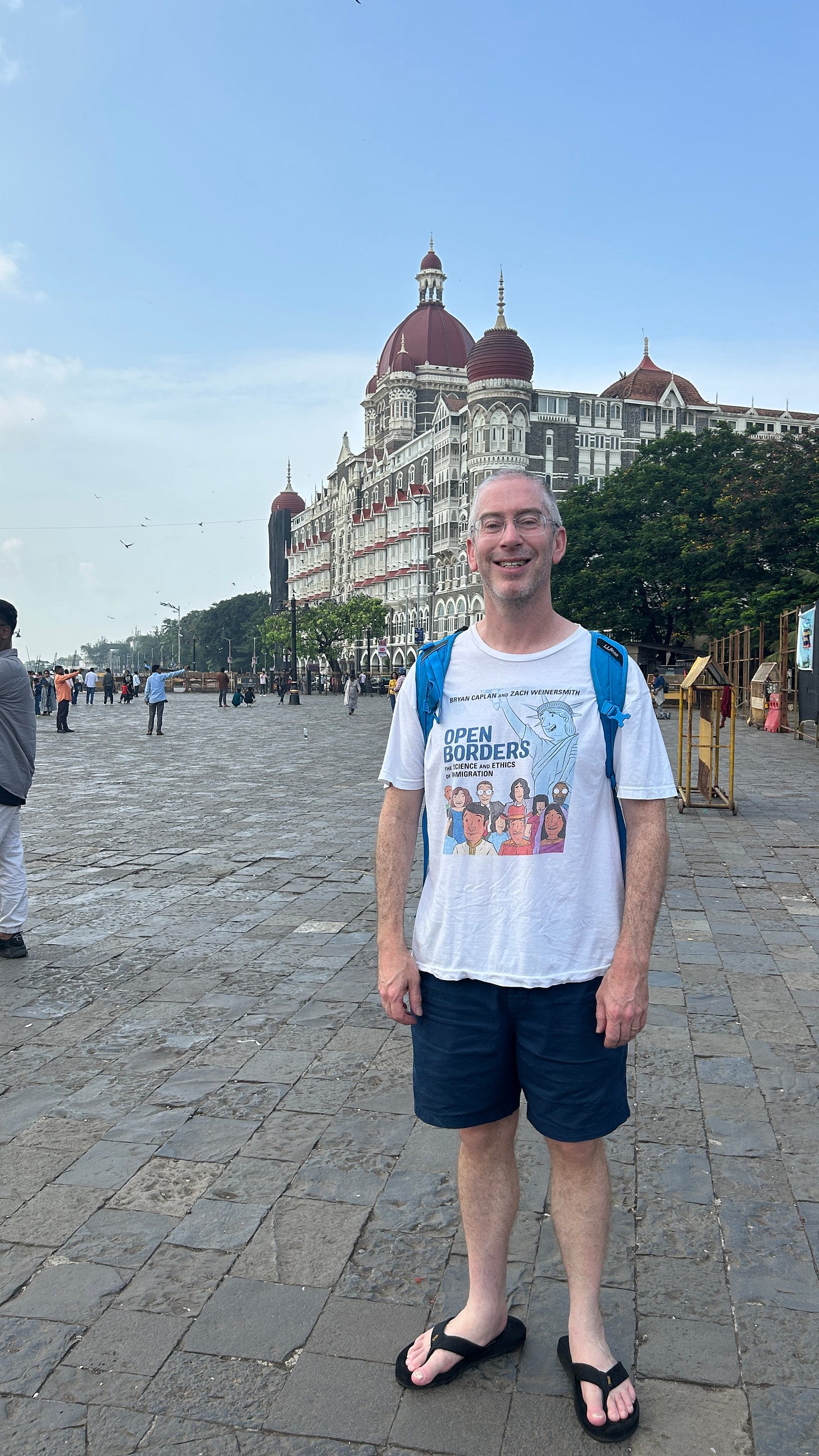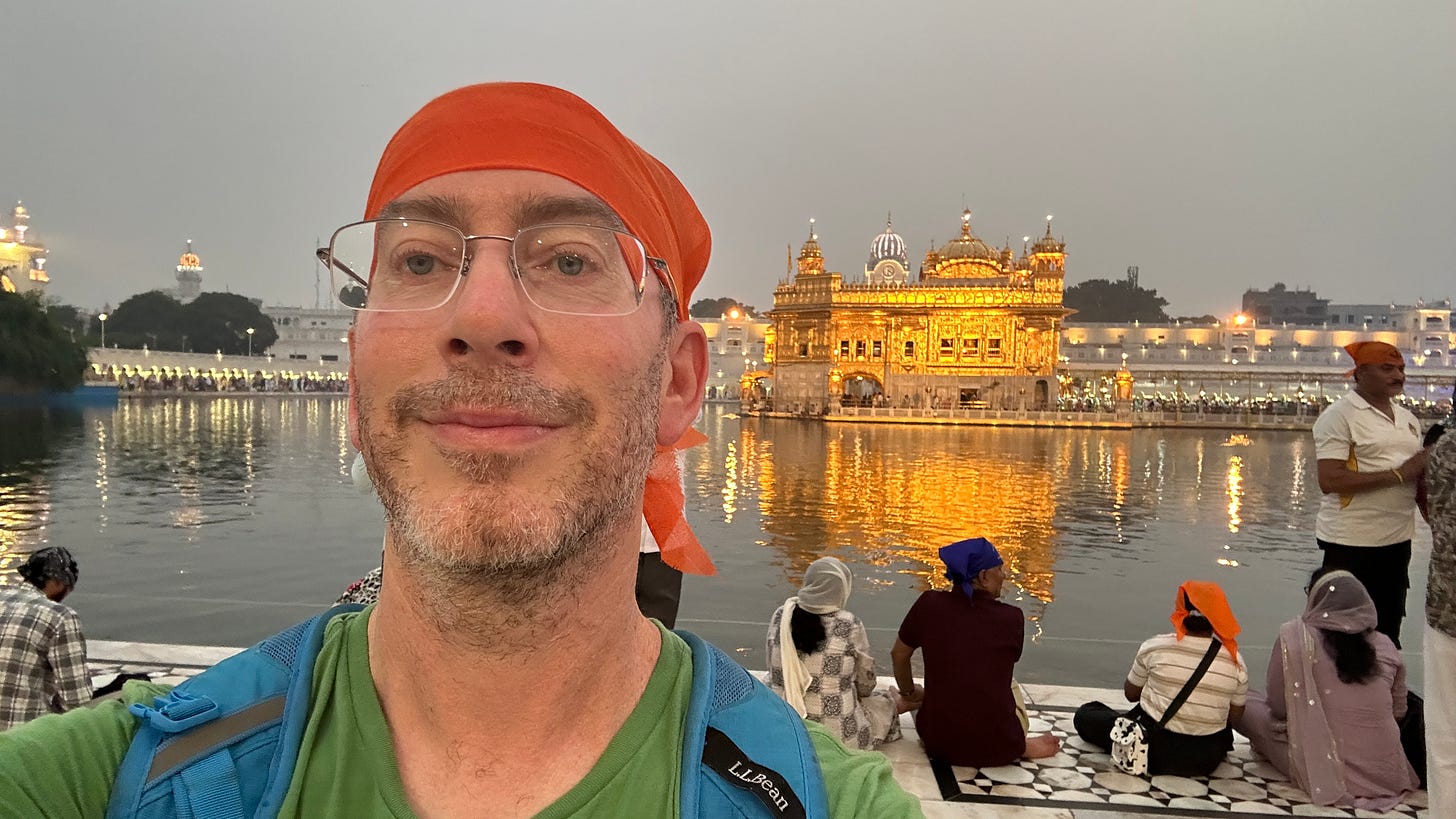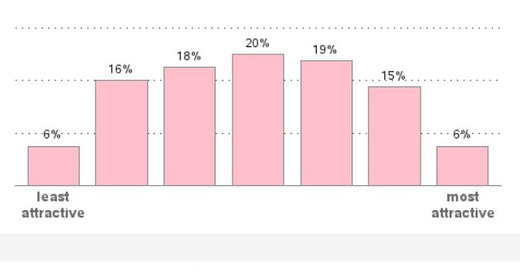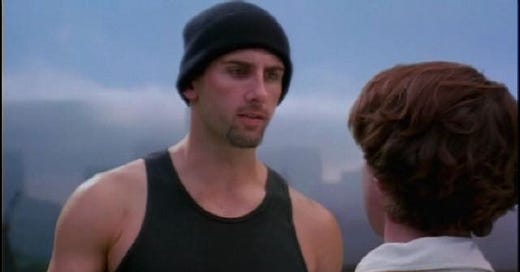
I’m back from my first trip to India, where I visited Mumbai, Delhi, Agra, and Amritsar. I enjoyed fine company in all four cities. In Mumbai, my new friend Sachin Aggarwal, head of the local EconTalk Club, rolled out the red carpet — and ACX Mumbai joined the festivities. (Thank you, Scott Alexander, for creating such hospitable rationalist clubs all over the world). In Delhi, I spoke for the Mont Pelerin Society as well as TrustBridge and the Centre for Civil Society. I visited Agra, home of the Taj Mahal, on a one-day MPS bus trip, giving me a great chance to catch up with old friends Eric and Sue Crampton. I even talked a couple of Indian friends into flying with me to Amritsar, the heart of Sikhdom on Earth.
Here are my main thoughts on the experience.
The best minds in India are awesome. I had great conversations with academics, students, and businesspeople almost everywhere I went. Quite a few have lived in the West — and almost every young person I polled wants a green card. Pre-assimilation is rampant in India. English is widely spoken, smartphones are everywhere, and consumerism is the Indian Dream.
The best attractions I saw — the Taj Mahal and the Golden Temple — are similarly awesome. I also loved Mumbai’s two main archaeological sites (Kanheri Caves and Elephanta Caves), and give Delhi’s National Museum and Amritsar’s Partition Museum high reviews. India’s stubborn refusal to capitalize on Western tourism with visa-free travel and obsequious airport security is a tragic missed opportunity.
That said…
India is by far the poorest country I have ever visited. While I am well-aware that life in India has drastically improved since 1991, the poverty that remains is still pretty horrifying. Uber drivers were lucky to net ten dollars a day. In every city I visited, I saw children under the age of ten begging in the midst of chaotic street traffic. Sometimes they were with their moms or older siblings, but these pitiful kids usually seemed to be all on their own. While most of them were inured to their plight, I also witnessed a few sidelined child beggars crying their hearts out with no one to comfort them. All Effective Altruism aside, I was tempted to hand each of them a day’s worth of rupees. But I didn’t. The situation was so hellish I felt paralyzed.
Why is India still so poor? “Lack of human capital” is only a minor problem. Even the lowest-skilled Indian workers I saw could easily prosper in the United States as drivers, waiters, cooks, maids, and janitors. “Dysfunctional culture” is also a distraction. Ordinary Indians have a great work ethic, grace under pressure, and passable English.
OK, so why is India still so poor? All libertarian bias aside, India’s central problem is absurd regulation and state ownership. Absurd how? To start: The Indian government strictly protects legal employees, so 90%+ of Indians work “informally.” Our bus driver to Agra was required to take a rest stop every two hours — in a country packed with tuk-tuk drivers zooming around like maniacs. The government caps the maximum size of farms — and bars foreigners (including Non-Resident Indians!) from owning farms at all. A great way to strangle the food supply and impoverish farmers at the same time. The Indian government also crushes construction, most notably with its infamous Floor Area Ratio regulation — in a country where plenty of people sleep on the streets. Developers aren’t even allowed to build skyscrapers in slums — and housing prices in major cities rival those in top Western cities. What about state ownership? Locals told me that private Indian schools cost parents one-tenth as much as public Indian schools cost taxpayers.
Indians often speak of British influence, for good and ill. No one, however, spoke of Soviet influence, which was strong from India’s independence until the USSR’s 1991 collapse. Independent India aped the Soviets’ “Five-Year Plans” until 2017, which probably explains the crazier agricultural policies. For me, the Soviet influence was most blatant at the airports. Not only are they ridiculously bureaucratic, with two or three times the normal number of redundant paperwork checks; India is also the only country I ever visited that makes it hard to leave. Seriously, what were they planning on doing to me if my exit papers were not in order?
India is the most unequal country I have ever visited. Officially, granted, it’s more equal than the U.S. But I strongly disbelieve the official statistics. In India, the worst slums I’ve ever seen are walking distance from some of the most lavish malls I’ve ever seen. These malls were vast and packed, their prices were as high as northern Virginia’s, and almost none of the customers were foreign. The upshot is that plenty of rich Indians were spending as much on a fast food lunch or a two pints of ice cream as an Uber driver earns all day.
India is the filthiest country I have ever visited. Outside a few prime locations, garbage and rubble line the streets. Skinny stray animals — including stereotypical sacred cows — abound. 98% of the inhabited areas I saw were comparable to the bottom third of Palermo, Italy. And that’s saying a lot!
India has the most frightening traffic of any country I have ever visited. Walking from one tourist site to another — or even from your hotel to the closest restaurant — is almost impossible. Usable sidewalks are virtually non-existent. Except in the dead of night, the roads are jammed with a kaleidoscope of buses, cars, tuk-tuks, pushcarts, bicycles, horse-drawn wagons, random cattle, and stray dogs. The three times I tried walking, I ended up fleeing for safety in a matter of minutes. My taxi driver assured me that the Jama Masjid was only two minutes away on foot. But after vainly trying to navigate the traffic, I beat a hasty retreat without even gazing upon the famous mosque.
Despite its bizarre prohibition of photography, the Partition Museum in Amritsar was amazingly fair. In case you haven’t heard, Indian independence began with a horrifying bloodbath. Hindus mass murdered Muslims; Muslims mass murdered Hindus. To avoid becoming victims, local religious minorities across the subcontinent fled their homes in what was probably the largest refugee crisis in human history. The Partition Museum walks you through this grotesque affair, bravely documenting even the war crimes of the Sikhs just minutes from their Vatican.
I place primary blame for these horrors on the anti-colonial fanatics who became the rulers of independent India and Pakistan. After World War II, British India was finally at relative peace. But the Indian demagogues (who wanted to rule all of British India as a single country) and the Pakistani demagogues (who wanted a separate homeland for Muslims) angrily pushed for “immediate independence” while denying the obvious fact that millions of their countrymen were itching for genocide. In the face of this dual demagoguery, the British partitioned the country at warp speed. Negligent, I grant, but given anti-colonial fanaticism, there was no peaceful way to buy a few more years for the transition.
A few Indians asked me if I was also critical of American independence from Britain. Which I definitely am. Mather Byles asked the right rhetorical question: "Which is better — to be ruled by one tyrant three thousand miles away or by three thousand tyrants one mile away?" With rare exceptions, “independence” means a bloodbath, followed by the oppression of local elites.
My Indian friends assured me that you cannot infer anyone’s caste from their physical appearance. When pressed, however, some granted that you can often tell that someone does not belong to the lower castes. Furthermore, since India has a pronounced height/socio-economic status gradient, you can also probabilistically infer caste from height.
One friend insisted that zero Bollywood actors are Dalits. Dalits don’t even play Dalits! But google names at least five.
At risk of sounding like an arrogant American, child beggars are the shame of India. Don’t speak to me about India’s “low state capacity.” The government has money for massive statues. It kept their schools closed for well over a year despite poor connectivity. It has money for a big crusade to protect stray sacred cattle. Officials sputter at the idea of welcoming Western tourists with visa-free travel. But when they see kids begging on the streets, they fatalistically shrug.
And for no good reason, because child begging is not an expensive or complex problem to solve. If you paid the poorest children’s families a dollar or two every day they spent at a daycare center instead of begging on the streets, almost all of them would accept the deal. Given India’s crashing fertility, the Malthusian objection that “Poor families would just have more kids they can’t support” is paranoid.
That said…
I’m still long on India. They’ve had outstanding economic growth for decades — but remain poor enough to count on catch-up growth for decades more. Policy is bad, but probably still improving. And while critics hyperbolically compare Modi’s Hindutva to “fascism,” the people of India speak freely. Not because they’re brave, but because they know they have little to fear. India’s surprisingly high degree of federalism provides further hope that somewhere in India will get things right. I was quite surprised to meet a Hindu who told me that in his part of India, beef-eating is totally legal. Check out the map:
That said…
Waiting decades for India to grow its way out of poverty is ridiculous, because Indians who reach the First World escape poverty at once. Most are ready to work the day they arrive. The migrants benefit, because they go from Third World wages to First World wages overnight. The world benefits, because migration drastically multiplies their productivity. (About eight-fold according to Clemens, Montenegro, and Pritchett). And India benefits, because of remittances, business connections, retirement housing, and more.
Even if you have cultural fears about immigrants in general, what exactly is culturally objectionable about Indians? I live in one of top centers of Indian migration in the United States, and no one here even claims that they’re clinging to their native culture of crazy driving and rampant littering. They’re definitely not unleashing stray cattle on us. Yes, I know Indian Americans are self-selected from high castes and top schools. But after ten days in India, I confidently declare that the children of randomly-selected Indians would do well here. Like the Indians who are already here, they’d adopt almost everything good about modern U.S. culture, while retaining the strong family values that Americans have been foolishly forgetting.





















Sounds like hell on earth. I would not want my country to become like that.
"But after ten days in India, I confidently declare that the children of randomly-selected Indians would do well here."
Why?
"they’d adopt almost everything good about modern U.S. culture"
Why?
"while retaining the strong family values that Americans have been foolishly forgetting."
Why?
Most low IQ immigrants tend to become more like Americans when they immigrate. Divorce and crime rates increase for instance in the second generation.
"I live in one of top centers of Indian migration in the United States"
Me Too.
That Indian immigration pushed the area from Republican to Democrat. It caused COVID to be a living hell for me, and Indians strongly supported COVID insanity.
My school district just implemented collective bargaining thanks to its flipping blue, Indians are already make us more socialist just like back home.
My experience with Northern Virginia Indians is largely on corrupt government contracting projects and their vice grip on Northern Virginia's hospital system (where they are utterly useless as your doctor). I've never met a more nepotistic group of people in my life. They are tailor made for Northern Virginia gov contracting scams.
It's their very assimilation that makes them worse. What are they assimilating too? Indian professional women are probably the most "woke" people who exist on the planet.
We're getting the best India has to offer, and I'm still not sold. God help us if we got the worst.
Anyway, I think the strongest opponents of Open Borders with India would be other Indians. They want to get away from India, not have it follow them.
"India’s central problem is absurd regulation and state ownership. Absurd how? To start: The Indian government strictly protects legal employees, so 90%+ of Indians work “informally.” Our bus driver to Agra was required to take a rest stop every two hours — in a country packed with tuk-tuk drivers zooming around like maniacs. The government caps the maximum size of farms — and bars foreigners (including Non-Resident Indians!) from owning farms at all. A great way to strangle the food supply and impoverish farmers at the same time. The Indian government also crushes construction"
This IS Indian culture. Since they have no respect for individual liberty and no civic-mindedness, they produce governments like this.